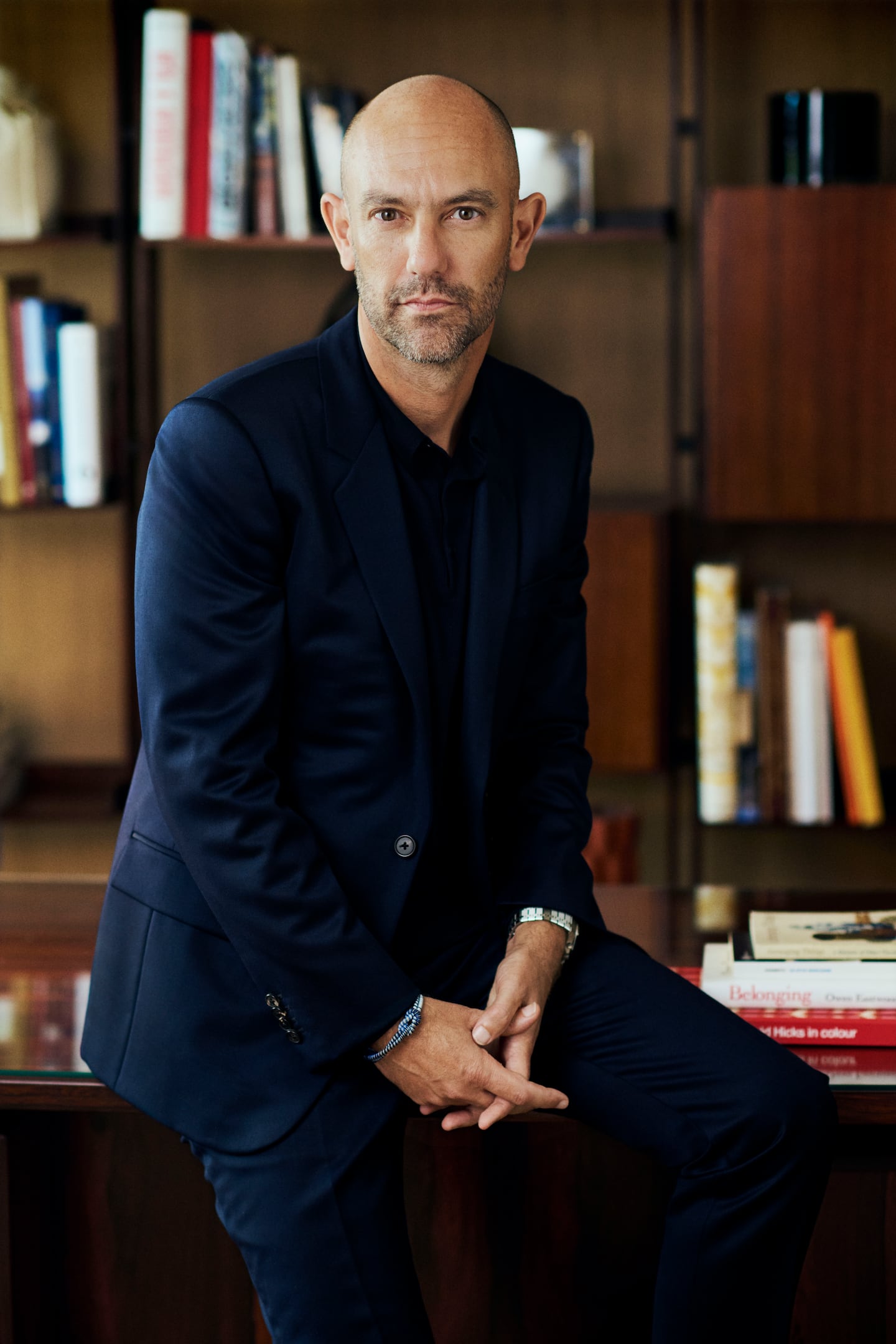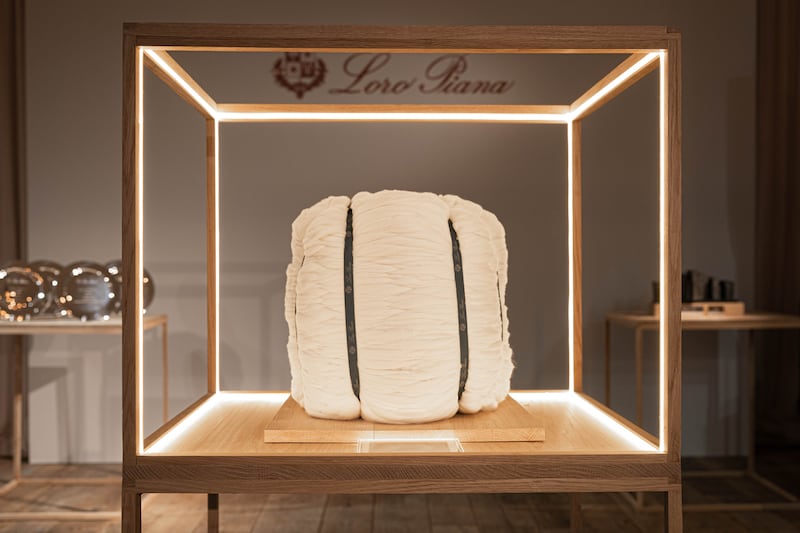
The Business of Fashion
Agenda-setting intelligence, analysis and advice for the global fashion community.

Agenda-setting intelligence, analysis and advice for the global fashion community.

Don’t call Loro Piana, the uber-luxe label owned and worn by LVMH owner Bernard Arnault, “quiet luxury.” Its chief executive Damien Bertrand who joined the brand two years ago from LVMH stablemate Dior is having none of it. Arnault last month described the northern Italian brand as having enjoyed “magnifique” growth over the past year.
But Bertrand takes issue with those who argue Loro Piana’s sales surge is down to a vogue for pared back luxury despite stellar results at logo-free labels.
“Sometimes, people ask me the question, ‘Is Loro Piana quiet luxury?’ I invariably answer ‘No.’ Loro Piana existed before quiet luxury and will exist afterwards; there are a lot of things [about the brand] that are not quiet at all,” he says.
As an example, Bertrand points to the launch of a prominent pop-up store in the middle of the elite ski resort Zermatt this winter. “It’s not so quiet, but people love it. They have hot wine and browse our collections. We’ve had a lot of new clients who have discovered us,” he says. “We were the first luxury brand in Zermatt, now all the brands want to be there,” he says. “In Dior we did a lot of disruption, in Loro Piana we are doing it too but in a Loro Piana way.” Next year, he plans to take the pop up somewhere else.
ADVERTISEMENT
If that seems a different tack for the super-pricey, conservative northern Italian cashmere label LVMH acquired from the Loro Piana family a decade ago, that’s because it is. Arnault famously tells families he is not going to change anything when he buys their business. Loro Piana was no exception, according to members of its founding family. Yet the house has changed since its acquisition a decade ago, transformed from cottage industry to global luxury brand. The appointment of Bertrand, a native of Marseille, who spent 20 years at French FMCG behemoth L’Oréal and was made head of womenswear at Dior in 2016, is testament to that evolution.
Under Bertrand’s leadership, Loro Piana’s strategy has shifted subtly in a bid to make the brand more contemporary, and appeal to a wider clientele. Bertrand argues today that, far from being a label solely for the ultra-rich, the “potential of Loro Piana is infinite.” A key part of that new strategy has been the launch of leather goods, the brand’s fastest growing category, says Betrand, albeit from a low base. Last year, Loro Piana finally launched a long-awaited handbag range, the Bale, named after the pillow shaped wool bundle that’s the start of the supply chain. It’s a crucial step.
Arnault acquired Loro Piana a couple of years after failing to seize control of French family-owned ultra luxe maison Hermès. And it’s been clear from the outset that Arnault aims to turn Loro Piana into a credible Hermès rival. Loro Piana is dwarfed in size by Hermès. Analysts estimate annual revenues at the Italian label are around the billion euro mark. Hermès group sales hit 11.6 billion euros in 2022, the latest number available. Still, with last year’s launch of the Bale bag, Loro Piana has decisively entered the segment that drives the majority of Hermès’ growth.
The intention to rival Hermès seems to burn bright for Bertrand, even if it goes unstated. “My mandate is to make Loro Piana the pinnacle of luxury and the most desirable maison in the world,” he says. The Bale bag was just “the beginning of a category.” Interiors are another frontier Bertrand intends to grow.
It’s all part of an overhaul of Loro Piana’s image to make it more contemporary and appeal to a wider clientele. Bertrand says he took his first two years “to rework completely the silhouette,” and to make it “more modern and more harmonised between men and women.” He has also introduced seasonal themes in a (gentle) nod to runway rhythms. This Spring/Summer is an ode to artisanal manufacturing inspired by Italy and Japan. That’s helped drive the brand among younger consumers with shorter attention spans. Bertrand says the average age of its clientele has dropped to between 35 and 40 years old.

Still, Loro Piana’s central raison d’etre remains constant today: the creation of ultra luxe garments out of prized, and increasingly finite, raw materials with stellar price points to match. Access to rare fibres has been fundamental to the label since its founding by the Loro Piana brothers in 1924, but it’s taken on increased commercial significance as the Covid-19 lockdowns made clear the importance of supply chain resilience. Add in the impact of the climate crisis, both extreme heat events and water shortages, and deft management of Loro Piana’s supply chain has become increasingly key to its capacity for growth.
When LVMH bought 80 percent of Loro Piana for €2 billion in 2013, observers attributed its rich premium to its vertically integrated supply chain. Today, that sum is looking like money well spent as brands engage in an arms race for increasing scarce raw materials and manufacturing talent. It also means that Loro Piana’s growth potential is balanced on that finiteness: there is a limit to how much Loro Piana can produce, but perhaps not how much it can sell its goods for.
Loro Piana’s Record Bale competition is a case in point. The nub of the competition, begun by the Loro Piana family more than two decades ago, was to spur merino farmers in Australia and New Zealand to produce ever finer and higher quality wool. Italian academic Stefania Saviolo has argued a shortage of raw materials will mean the supply chain is going to become a branded luxury good itself, right down to the farmers who produced top quality wool. The winners of this year’s Record Bale competition “Pyrenees Park” fit that bill.
ADVERTISEMENT
According to Bertrand, products made from the Record Bale competition’s winning wool are sought out by “some very good clients who love it,” he says. “There is only enough of the wool to make about 50 suits: the product we get out of the record bale is a very small quantity, very rare, very pricey and very prized as well.”

But all is not well in the supply chain. The wild vicuña which provide the rare fibres for Loro Piana’s top end ranges are increasingly moving higher into the Andes to avoid hotter weather putting them potentially out of reach of shearers who have rarely worked at such high altitude.
For Bertrand, Loro Piana’s growth model is also linked to a specific relationship with time. Bertrand makes a distinction between Dior, which has a six-month turnaround for collections, and Loro Piana. “It takes us up to 14 months [to create a new product]; the fashion brands do not have the luxury of this time,” he says. Of course, that concept of time without deadline is a pull for the restless global elite who wear Loro Piana themselves (Mark Zuckerberg and Jeff Bezos are clients) and apparently have little of it themselves.
Bertrand is also driving the stickiness of the brand by encouraging Loro Piana clients to see themselves as members of a tribe (the 0.1 percent given the $980 price tag on a pair of its popular Summer Walk Loafers). Customers tend to be “connoisseurs who can recognise each other,” he says. “You will never have big logos but there is a look and feel of our garments.”
The notion that Loro Piana is a badge of belonging to the elite is being fostered by the label’s new sponsorship of elite sports events: it backed the Ryder Cup for the first time last year, and this year will sponsor the Giraglia Regatta, a feature of the summer season on the French Riviera.
But is there a club Loro Piana would rather not be part of? Roy family characters in the hit television series “Succession” wore the brand, including Jeremy Strong’s odious Kendall Roy. Bertrand doesn’t miss a beat. True to the maxim that all publicity is good publicity, Bertrand says he’s “never had or heard a comment from anyone suggesting it was bad publicity.” The clothes were chosen by the actors and production and weren’t product placement, he adds.
Another key issue for Bertrand is manufacturing talent. Loro Piana has 1,200 artisans with the know-how to work its woollen garments, but it’s now doing talks to school children, especially in the regions famous for Italian luxury manufacturing clusters, such as Tuscany for leather goods, Piedmont for textiles and Marche for shoes, to encourage them to become artisans when they leave school. It’s also seeking architects and engineers out of universities.
Those engineers are necessary because today’s Loro Piana “is a mix between the hand and the machine,” says Bertrand. “I need people who can project themselves into the future but we are a gatekeeper of a tradition too,” he explains. He’s not talking about the use of robots but artificial intelligence. As of last year, Loro Piana engineers have been using AI to rapidly spot defects in colour or weave in a bale of wool. “We are implementing it in our factory as we speak,” he says.
It’s another sign this isn’t your mamma’s Loro Piana.
Disclosure: LVMH is part of a group of investors who, together, hold a minority interest in The Business of Fashion. All investors have signed shareholders’ documentation guaranteeing BoF’s complete editorial independence.
The managing director at Christian Dior Couture will take over as CEO of Italy’s Loro Piana, replacing former Luxottica executive Fabio d’Angelantonio. Damien Bertrand, LVMH, Luxury.
The final season of HBO’s drama isn’t the only reason the discreet style of the ultra rich is a topic of conversation again. That, plus what else to watch for this week.
The designer has always been an arch perfectionist, a quality that has been central to his success but which clashes with the demands on creative directors today, writes Imran Amed.
This week, Prada and Miu Miu reported strong sales as LVMH slowed and Kering retreated sharply. In fashion’s so-called “quiet luxury” moment, consumers may care less about whether products have logos and more about what those logos stand for.
The luxury goods maker is seeking pricing harmonisation across the globe, and adjusts prices in different markets to ensure that the company is”fair to all [its] clients everywhere,” CEO Leena Nair said.
Hermes saw Chinese buyers snap up its luxury products as the Kelly bag maker showed its resilience amid a broader slowdown in demand for the sector.